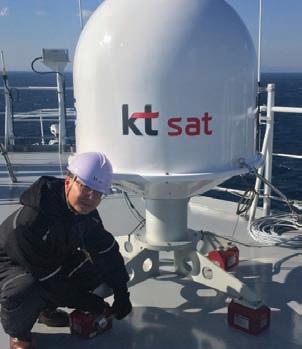#CAPSTONE #Moon #NASA
CAPSTONE: Proving a path to the Moon Creating a sustainable presence on the Moon and establishing a Gateway space station is still a work in progress, but the successful launch of the Cislunar Autonomous Positioning System Technology Operations and Navigation Experiment, known as CAPSTONE™, takes us one step closer to the finish line. This 55-pound CubeSat will not only test the Near Rectilinear Halo Orbit around the Moon but will also demonstrate spacecraft-tospacecraft navigation services that don’t rely exclusively on tracking from Earth. Crispin Littlehales, Executive Editor, Satellite Evolution Group
I
t’s been fifty years since Eugene Cernan, Commander of the Apollo 17 mission spoke these words: “As we leave the Moon at Taurus-Littrow, we leave as we came, and God willing, we shall return with peace and hope for all mankind.” One might well ask what is taking us so long to return. Besides being a political football with a costly price tag, the game has changed. Instead of landing a few
Path to the Moon astronauts on the surface for a brief walkabout, the US wants to establish a permanent outpost—one that can be used as a stepping stone to Mars. NASA’s Artemis program proposes to do just that, and the agency is using the CAPSTONE™ mission to verify the best way forward.
SMALL SATELLITE ON A BIG MISSION
The Space Technology Mission Directorate via the Small Spacecraft Technology and Small Business Innovation Research programs at NASA’s Ames Research Center is supporting CAPSTONE’s development and the Artemis Campaign Development Division within NASA’s Exploration Systems Development Mission Directorate is supporting the launch and mission operations. The agency’s Jet Propulsion Laboratory (JPL) is backing the communication, tracking, and telemetry downlink via NASA’s Deep Space Network (DSN), Iris radio design, and groundbreaking 1way navigation algorithms. The lunar orbiter that NASA has assigned to conduct this critical mission was built by Tyvak Nano-Satellite Systems, a subsidiary of Terran Orbital Corporation. It is 144.5 CM x 50.1 CM x 33.0 CM and has a mass of 26kg. There are two MKII deployable solar arrays providing 120W of peak power and triple redundant MKII 12V battery modules. The satellite includes a radio tower on top and is equipped with a SWIFT-SLX S-band radio with ranging functionality provided by Tethers Unlimited, Inc. NASA/ JPL IRIS band radio provides the uplink, downlink, and navigation ranging. Redundant MKII sensors and actuators, including two star trackers, four reaction wheels, two coarse sensor modules, and two IMUs have been integrated for guidance navigation and control. An innovative hydrazine propulsion system from Stellar Exploration provides upwards of 200 M/S for orbit adjust and vehicle momentum management and there is a
CAPSTONE will demonstrate spacecraft-to-spacecraft communications from NHRO orbit. Photo courtesy NASA
14
www.satellite-evolution.com | August 2022
issue-final.pmd
14
09/08/2022, 11:47






